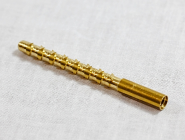50 posts to date on this topic.




Many varied opinions. Check the net and your find an almost infinite number of approaches.
Most who post on here are experienced shooters. They are not the once-a-year sight the deer rifle guys. They spend a lot of time on the range and start to discover what works for them, their rifle, and their application. In other words, they begin to accumulate data and knowledge on their procedures and the performance results.
Aren't performance results the ultimate answer to which procedure is best for you?
Bottom line, I don't think there is an absolute answer to the "proper" way to clean a rifle except it has to be done so you don't harm the bore during the cleaning process or allow corrosion to take hold.
Sometimes we can get lost in the quagmire of theories and technology when all we are trying to do is hit the desired target area on a consistent basis which has many parameters for a successful shot, the most significant of which is the skill of the shooter.












